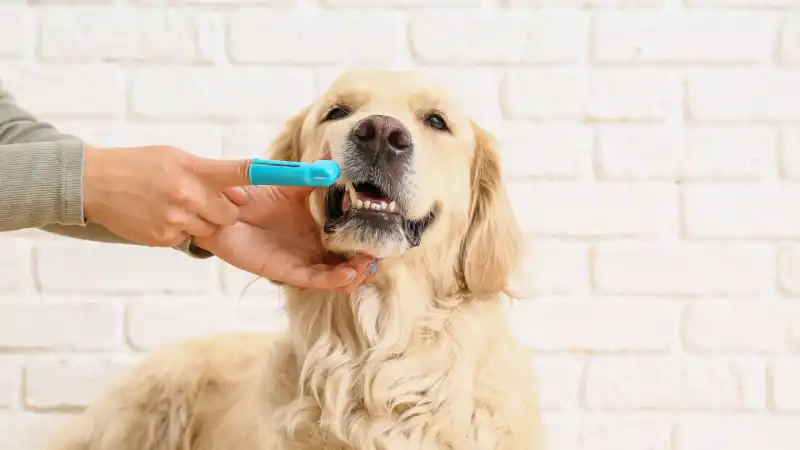Pet Heat Safety
Dogs wear fur year-round and cannot cool themselves by sweating as we do. Learn the signs of overheating in dogs, tips to treat overheating in dogs, and prevention.

Imagine this scenario: You're at the dog park on a cool summer day with your dog. On your way home, you decide to stop at the store for some groceries. Your car thermometer reads just 75 degrees Fahrenheit, so you figure your pet will be fine in the car for the few minutes it’ll take to grab your items.
While shopping, you bump into a friend and start chatting and by the time you get out to your car, you’ve left your pet for 10 minutes in a 94 degree car. Just 10 minutes is all it takes for your car to climb from 75 degrees to 94 degrees. Just 20 more minutes and your car is a sweltering 109 degrees Fahrenheit.
Dogs cannot cool themselves by sweating like we do, and they also wear their fur coat year round, so it is important to recognize signs of overheating and to follow some precautions to keep your pet safe. In honor of National Heat Safety Awareness Day, which occurs each year in May, here are some signs of overheating in dogs and tips to treat dog overheating:
How Can I Prevent My Pet from Overheating?
Never leave your dog in a car. The National Weather Service urges all pet owners to “Look Before You Lock” to prevent accidentally leaving your pet behind.
Avoid walks during the hottest part of the day. Dr. Jessica Vogelsang, DVM, urges dog owners to allow their pets to acclimate slowly to the hotter weather, gradually increasing the length of walks.
Make sure to provide plenty of drinking water and shade for animals who spend most of their time outside.
Apply sunscreen to your pet’s ears and nose at least 30 minutes before going outside. Dogs with short hair, white fur, or pink skin are much more susceptible to sunburn.
Know the signs of overheating so you can help your pet cool off before it is too late.

Every Dog and Cat Deserves the Pet Insurance of Champions
Get prize-winning care for your pets.
What Are the Warning Signs of Overheating?
Dogs pant to eliminate heat, but excessive panting is a sign of being overheated.
Elevated temperature can occur if a dog fails to cool off by panting. Take your dog’s temperature rectally. Body temperatures above 103 degrees Fahrenheit are abnormal. You can read more about the warning signs and treatment of hyperthermia here.
Bright red gums and tongue can indicate heat exhaustion.
Fatigue or resistance to walking are also signs of overheating.
If you're a cat owner, you can learn more about symptoms of overheating in cats here.
What Should I Do If My Pet Gets Overheated?
Cool them off immediately. Dr. Vogelsang suggests spraying your pet with cool water to bring their temperature down.
Offer plenty of water to drink. You can find more tips on what to do immediately if you suspect heat stroke in AKC’s blog post.
If your pet is not able to cool themselves or seems to be getting more lethargic, take them to the vet immediately. Heat stroke can cause a host of other problems for your pet.
Be smart this summer. Remember that your furry friend’s body doesn’t work like yours, and needs special consideration in the hot summer months.
Take some of the stress out of pet ownership with Accident & Illness Coverage from AKC Pet Insurance (underwritten by Independence American Insurance Company). Our pet insurance plans are designed to be there when you need them, allowing you to focus more on the health of your pet and less on costly veterinary bills.

Every Dog and Cat Deserves the Pet Insurance of Champions
Get prize-winning care for your pets.

Hi, I'm Pam. List maker, note taker, and avid reader. I'm married to my college sweetheart and we have three amazing kids, all of them boys. We also have one furry child, a golden retriever rescue dog. I have been blogging for PetPartners since 2015, and I love researching and writing tips about how to be a better pet parent. I spend most of my time sharing my adventures at lavenderandlaugh.com, where I share the ways I am learning to be a better wife and mom--to my two and four-legged children.
READ MORE ARTICLES

